The UnderGarden – Review
by Adam
|
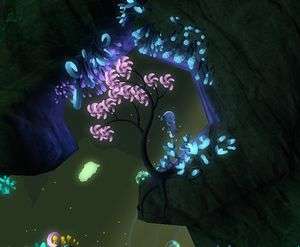 It’s undoubtedly a busy time of year. Work is likely putting the pressure on every gamer in whatever industry, there are so many things to do and not enough hours of daylight to get it all done. That suits us all just fine as it makes for more hours spent on the sofa, all nice and warm, enjoying the Brotherhood of the Need for Speed: Black Ops. Whatever you are playing, to help unwind this Christmas, Vitamin G Studios want to take you away from the world of assassinations, hot pursuits and the call of duty and relax you in this XLBA and PC release, The UnderGarden.
It’s undoubtedly a busy time of year. Work is likely putting the pressure on every gamer in whatever industry, there are so many things to do and not enough hours of daylight to get it all done. That suits us all just fine as it makes for more hours spent on the sofa, all nice and warm, enjoying the Brotherhood of the Need for Speed: Black Ops. Whatever you are playing, to help unwind this Christmas, Vitamin G Studios want to take you away from the world of assassinations, hot pursuits and the call of duty and relax you in this XLBA and PC release, The UnderGarden.
Billed as a casual zen game, The UnderGarden is not a title that wants you pumped up and switched on. This is a slow paced, violence-free and straight forward physics puzzler that is simply designed to soothe away the stress of life with its beautiful, colourful art direction and charming, dynamic soundtrack. You play as….let’s call him, Nigel, a Teletubbie lookalike who has lost his way and consequently ended up in the depths of the ocean where he dedicates his existence to bringing plants to life. Ok, so perhaps that’s a little beyond the blurb provided by Atari, but being a very casually marketed product for the ‘casual market’, I’m afraid that there’s really no emphasis on any form of plot here so I’m going to make one up.
From the start, Nigel (as he will now, forever, be known) is dropped into a world hub where you’re free to acquaint yourself with the controls. For the 360 gamers, the left stick controls Nigel, moving him around the 2D plane exactly as you would expect, with the A button providing a charge based dash should you find yourself needing an extra burst of speed. On the PC, it’s even more basic than that, with the mouse cursor presenting itself as an arrow relative to Nigel’s position and the left click serving as a move toward function. The closer the cursor to Nigel, the slower and more precise the movements, with a further distance leading to faster speed on click. I did find it strange that between the two versions, the boost function offered by the A button disappears completely for mouse users, although those in possession of a Wireless Gamepad Receiver are able to use 360 pads, restoring the ability in the PC version.
With movement now under your control you’re free to move Nigel toward the first level within the hub. No instruction is given, though each level is contained within its own cave, all of which are flagged with antennas that indicate levels available to play. Those lit in green are playable, while the locked levels are highlighted in red which follow clockwise from level one. It’s a simple design feature that tells you from the start that things are going to be kept to my most favourite of Einstein’s laws: make things as simple as possible, but not simpler. Once you’ve floated your way inside the first staging area, you’re prompted to hit Y in order to enter the first level.
 From this point the game wakes up, with onscreen prompts indicating you to move toward an easily identifiable green pollen sack which, on contact, releases dozens of spores into the immediate area. Just being in close proximity to these spores allows Nigel to absorb them, filling a radial power meter. Almost immediately, you’ll notice that with some power in the pollen gauge you start to bring the UnderGarden to life, with the flora surrounding you bursting into life at your touch.
From this point the game wakes up, with onscreen prompts indicating you to move toward an easily identifiable green pollen sack which, on contact, releases dozens of spores into the immediate area. Just being in close proximity to these spores allows Nigel to absorb them, filling a radial power meter. Almost immediately, you’ll notice that with some power in the pollen gauge you start to bring the UnderGarden to life, with the flora surrounding you bursting into life at your touch.
No extra button presses are required; your proximity to dormant flora instantly drains you of your pollen and allows them to erupt into stunning, vibrant colours that start to charm their way into those deep, dark spots of your brain that were beginning to wonder when something was going to die. As you begin to pollinate the area, a slider in the lower left corner catches your eye, displaying how much of the zone’s available flora you have so far brought to life, while mirroring it is a progress meter, similarly representing how far you have progressed in the level, helping you to estimate the flora remaining.
It’s an incredibly simple UI that tells you everything you need to know and never any more. Only at the level’s end will you be presented with a measure of your success, showing the flora in percentage form along with how many hidden flowers you managed to discover, and whether or not you were successful in locating the precious stone for the level. Also displayed is a score with no explanation at all as to how it was reached, making it feel like a rather arbitrary measure of your accomplishment, which is, of course, entered straight into an XBLA leaderboard. Determining quite how you’re better than anyone else, but not as good as those higher up than you, is next to impossible, especially if you managed to bring the entire UnderGarden to life and find all available collectibles. The only outstanding factor in this instance would be the time taken to complete the zone although no mention is offered and, because of its celebrity TV panel style scoring, you won’t find yourself replaying the zones in order to climb higher up the leaderboard. Autolog this is not.
Of course, just navigating the UnderGarden wouldn’t be complete without some basic physics puzzles. In order to manipulate the world around you, Nigel comes complete with his own force powers which enable him to tether up to eight attachable objects via threads which magically emanate from his cute, cuddly torso. Holding the X button charges a pink bubble around Nigel – something that looks incredibly like a defensive skill but which only acts as an automated proximity magnet. Anything entering the bubble which Nigel is able to manipulate is automatically tethered to his person, an ability that does not require the constant holding of the X button which, when released will dissipate the shield and prevent any more items from being collected. If, having collected a few items, you wish to then add more to Nigel’s klepto collection, players re-applying the Force Bubble Magnet™ will quickly find themselves scrambling for the items they have now just dropped. Considering the B button remains unused on the 360 pad and that most PCs are equipped with a plethora of other buttons to press, it’s pretty frustrating that the collect button also acts as the deposit button. Whilst I’m sure this adds something extra to the, fairly absent, challenge aspect of the game, it does very little to serve the part of you that the game is trying to relax.
As a consequence, you’ll constantly find yourself floating backwards and forwards, attempting to scoop up everything you’ve dropped and, if you happened to drop something in amongst these objects that you don’t want to pick up again, prepare for more frustration. Those with a steady thumb can manage to hover above the items and just allow for the circumference of the collecting orb to touch the corners of the objects you actually want, though it’s a precision exercise that will only make you growl in the same way old people do when you mention anything about <insert subject> ‘these days’. In a way, it does help to define the game by making you consider more carefully what you carry and where you drop it, but it’s more out of preventing any unexpected brain haemorrhaging than through puzzle or strategy.
Nigel is able to carry 2 types of things: fruit and musicians. It’s a picnic basket that would please Yogi Bear, with the various fruits all serving different purposes. You’ll encounter fruit that simply acts as a weight, required to press down on pressure plates throughout the zones (which in turn open up passageways) along with other functions you’d expect to find in a physics puzzler. Offsetting that is some funky helium-imbued fruit which serves the same technical purpose, only this time, for pressure switches which are attached to the roof, and sometimes fruit is used to lock a cogwheel in place when no other mechanism is available. Veering away from the blatantly obvious come the other likely characters, with Bomb Fruit becoming active on release from Nigel’s tether and Lantern Fruits which clear paths through the dark in the later stages of the game. It’s nothing ground breaking and the use of any of the fruits is, again, nothing so wondrous that you’ll be thinking ‘the fruit is a lie’. The puzzles are all very straight forward and pose only technical difficulties in dropping things in the correct place or timing the detonation of the Bomb Fruit so that it goes off where you need it to.
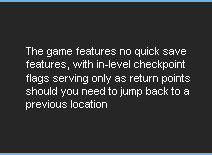 Musicians change what you see and hear in the game – or so the tooltip would have you believe during the load screens. More accurately, they cause flowers to re-bloom when they are in close proximity, creating some pretty effects – all of which disappear as you move further along. You are rewarded for having encountered and picked up each of the musicians in the level, provided you make contact with all of them. No challenge is set in carrying all of the musicians to the end, beyond a personal desire to get as many as you can in close proximity in order to enjoy the individual, instrumental sampling of each one which complements the stage’s soundtrack.
Musicians change what you see and hear in the game – or so the tooltip would have you believe during the load screens. More accurately, they cause flowers to re-bloom when they are in close proximity, creating some pretty effects – all of which disappear as you move further along. You are rewarded for having encountered and picked up each of the musicians in the level, provided you make contact with all of them. No challenge is set in carrying all of the musicians to the end, beyond a personal desire to get as many as you can in close proximity in order to enjoy the individual, instrumental sampling of each one which complements the stage’s soundtrack.
The musicians vary from percussion to strings and wind instruments, (not forgetting the token triangle player). Visually, there’s little to distinguish the little guys beyond their colour and a representation of the instrument they play. No animation is given to them beyond the subtle hand movements required to play the instruments, with no AI provided that would encourage any behavioural traits. They simply sit there and jam, no matter if they’re left to their own devices or floating behind you in tow.
While they are essentially useless, providing no bonus nor being required to bloom certain flora, the musicians are certainly cute and you’ll find yourself very attached to them. Being a non-violent game, no harm can befall them in the UnderGarden. This is something I found myself forgetting rather rapidly when I was first using the Bomb Fruit, skillfully swinging and releasing the, now live, bomb at a destructible wall, with three musicians following close behind. Not being willing to test the destructive power of the bomb and sacrifice Nigel’s life, I could only watch in horror as the inevitable detonation drew nearer, crying “NOOOOOOOOO”. The blast filled the screen, fading to reveal a path onwards, but without a musician in sight. It was the saddest of sad times.
Fortunately my ears are better than my eyes and I could still hear the sound of the musicians despite not being able to see them. After a little exploring I discovered the musicians scattered around the area which, after some very scientific experiments, revealed that blasts from Bomb Fruit will simply launch the musicians away, perfectly unharmed, and still jamming. It takes a while to get over their Kal-el condition and you’ll spend the first few stages worried sick that the little blighters are going to catch a death of cold. As the game goes on this feeling moves into the same territory of the parent who pretends they can’t hear their children screaming, with the tether physics occasionally causing your mobile orchestra to get caught above or below a tunnel you’re already halfway down, grinding you to an impatient halt. Eventually you reach the stage where you just couldn’t care where they all are or what they’re up to, only to be reminded of the happier days when you gather an orchestra almost by accident (read: Bomb Fruits) and float calmly above them, enjoying the sounds.
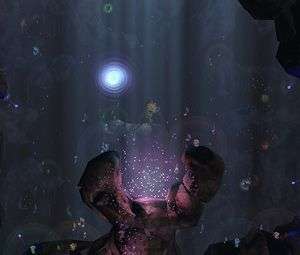 Graphically, the game can be equally as soothing with some of the best designed sections so well cultivated that you’ll worry about how far away you may be from Charlie Dimmock. The colours are so bright and vibrant that they can stop you in your tracks as you boost your way from section to section. The plant life floats playfully in the current and, despite the proximity nature of the musicians to the advanced bloom state of the UnderGarden, the visual effect is stunning. Nigel himself makes for a colourful character to observe as he floats through the stages and there’s a great deal extra to be gained in changing the colour of his skin, type of horns and the with the addition of a Top Hat and Mystery Moustache – all unlocked through progression and dedication in attaining 100% across the board.
Graphically, the game can be equally as soothing with some of the best designed sections so well cultivated that you’ll worry about how far away you may be from Charlie Dimmock. The colours are so bright and vibrant that they can stop you in your tracks as you boost your way from section to section. The plant life floats playfully in the current and, despite the proximity nature of the musicians to the advanced bloom state of the UnderGarden, the visual effect is stunning. Nigel himself makes for a colourful character to observe as he floats through the stages and there’s a great deal extra to be gained in changing the colour of his skin, type of horns and the with the addition of a Top Hat and Mystery Moustache – all unlocked through progression and dedication in attaining 100% across the board.
Sadly, the game fails to maintain a fluid framerate throughout, dropping noticeably in busier sections. Another detracting factor is the lack of camera control with the game always deciding what stage of zoom is appropriate. During narrow sections, the camera remains close and the framerate smooth; on entering a large area, it zooms out massively to allow you to get a snapshot of what’s required in that section. While it’s a helpful hint, it’s not dictated by progression but simply by proximity, with the camera operating at levels of zoom relative only to the space Nigel happens to be occupying. This often leads to you being forced to really strain your eyes in order to focus on Nigel and his immediate surroundings. In the especially vibrant areas, this really will give you a headache and make you wish you were popping a three kill-streak reward just to keep your eyes hydrated. Couple that with the major drops in framerate and the idea that the game’s here to massage you into a comfort zone begins to sound a lot like a con.
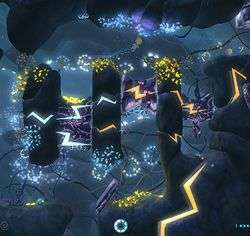 When you throw in the frustration of trying to navigate some of the trickier areas with a full complement of vital, puzzle solving fruits and musicians, you find yourself closer to the edge of the sofa rather than the relaxing cushions, growling in annoyance and considering saving your progress so that you can go and play something else to calm down. Sadly though, the game features no quick save features, with in-level checkpoint flags serving only as return points should you need to jump back to a previous location. If you exit the stage through the start menu, rather than completing it, no flora attainment will be stored and re-entry to the level will create an entirely new instance as though you were never there. This remains true in the event you complete a stage with 99% flora, with the game not returning you back into the UnderGarden only needing to find that 1%, but having you start from scratch.
When you throw in the frustration of trying to navigate some of the trickier areas with a full complement of vital, puzzle solving fruits and musicians, you find yourself closer to the edge of the sofa rather than the relaxing cushions, growling in annoyance and considering saving your progress so that you can go and play something else to calm down. Sadly though, the game features no quick save features, with in-level checkpoint flags serving only as return points should you need to jump back to a previous location. If you exit the stage through the start menu, rather than completing it, no flora attainment will be stored and re-entry to the level will create an entirely new instance as though you were never there. This remains true in the event you complete a stage with 99% flora, with the game not returning you back into the UnderGarden only needing to find that 1%, but having you start from scratch.
This can be especially frustrating when there can literally be unnoticeable contact points for blooms on branches of twigs, strings of flora lighting or a tiny patch of weeds, nestled between two established growths. While most stages allow you to backtrack much of the content, some puzzles cause previous paths to become blocked meaning that the only way to attain 100% is to start afresh. Whilst chasing higher places on the leaderboards holds little appeal, failing to hit that total completion for each level taunts you into tediously floating across every possible point of any given zone in order to make sure that you have activated all bloom points in an effort to avoid the shame of not having scored 100%.
For those who manage to overlook its flaws, or the more sinister who wish to inflict even greater harm on a curious friend, The UnderGarden comes complete with a drop in two player co-op mode, introducing Nigel’s wife – we’ll call her Nigella – into the world. With play confined to the same sofa and same screen, Nigella only makes the gripes seem worse, with the camera being forced to accommodate her presence, placing further strain on your already tired eyes. At no point will you find yourself wishing you had someone to play this game through with if you start feeling left out in not having someone to share The UnderGarden with. Mickey and Donald’s World of Illusion this is not. There are no ‘two-Nigel’ puzzles, with the only foreseeable advantage to having Nigella on hand being to exploit the boost feature in bypassing some of the weight sensitive puzzles. Providing you’re content with not needing to return to any of the levels so far explored, most weight required platforms can be entirely bypassed simply by spamming away on the boost and pushing the platform out of the way until you can slip into the next tunnel.
Over The UnderGarden’s 14 levels, you’ll find yourself tiring at the halfway point. The revelation of a second world hub, discovered after completing the initial nine stages, feels less like a reward and more like a sentencing. While the later levels make more of an effort with the puzzle aspects, you really find yourself caring less and less about achieving and more about simply making it to the end warp point. With the game only requiring you to reach the end of the level and not meet any requirements or hit any targets, it’s sadly too easy to just boost your way from A to B in those later stages.
Pros- Charming art style
- Engrossing audio sampling
- Easy to pick up and play
- Simplistic approach that doesn't patronise
- Nigel looks bitchin in a Top Hat
- Puzzles become tiresome and repetitive, following the genre trend
- Lack of camera control will strain your already burned eyes
- Poor physics and control options will frustrate the impatient
- The absence of Checkpoints and Save files will see you playing this one level at a time
- The idea that this is relaxing wears thin, fast
The UnderGarden isn't what it says it is on the tin. It is a superb looking game and it genuinely has a great deal of charm to it. It's sadly not a great puzzler, relying on re-using the same formulas that every puzzle game on the marketplace is currently peddling. There is little innovation beyond its simple, straight forward gameplay that leaves you to explore, rather than taxing you with a brain teaser. The UnderGarden's visuals are stunning, but the engine under the hood will punish you for enjoying it. The freedom, however, is fantastic and the hands-off approach is welcome in a world of 'demonstrate and practice ad nauseum'.
Most of what you get out of this title depends on your own play style and response to the game's world. I genuinely found myself bonding with the musicians and becoming bizarrely protective of them in a world where it was impossible for them to come to any harm but, if you're in this for the 100% attainments, brace yourself for some frustration.
Despite my objections based around how little it actually adds to the game, the only way I can see it succeeding is if there is a player equivalent Nigella to your Nigel - someone who is fairly useless but who will enjoy coming along for the ride. The cutesy nature of the game, coupled with the approachable gameplay, makes for a co-op experience that will allow one party to do all the work and the other to still take a share of the credit. It's no LEGO Star Wars, but if you've been looking to introduce someone to gaming, this isn't a bad way to get started.
For those looking for a great way to unwind after some Black Ops or Autolog challenges on Need for Speed this Christmas however, you're probably best off putting on some light jazz, staring at the lights on your Christmas tree and getting drunk.
Last five articles by Adam
- Party Pooper
- Battlefield 3 - Review
- Red Orchestra 2: Heroes of Stalingrad - Review
- Burnout CRASH! - Review
- Dead Island - Review















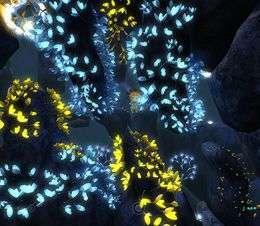
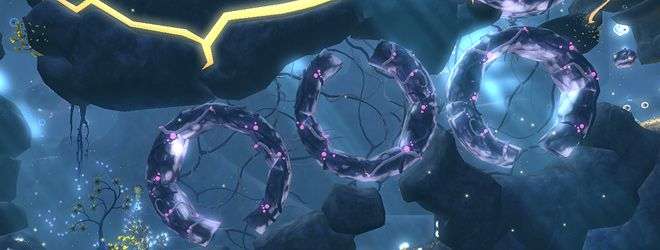
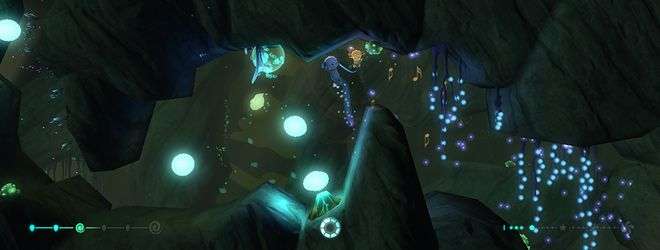
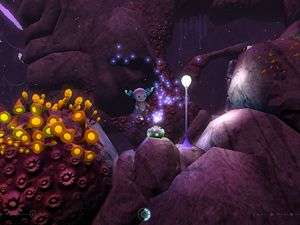
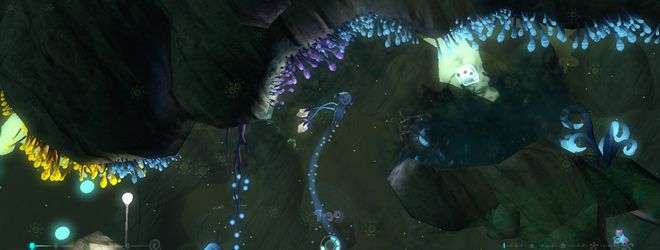
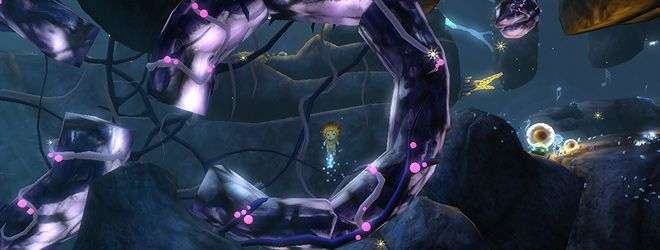





Very in-depth review, Adam. It looks absolutely stunning…I can’t get over the visuals. I know you talked of several frustrations, however, I think I will still grab this one to play over christmas…even if only in short bursts. The ethereal feel to the game just appeals to me and I reckon I’d find it fairly relaxing after this (pretty shitty) year.
I think that, whether the puzzles work or not, the arcade needs more oddities such as this one. Great review!
Nice writeup, I was pretty curious about this as I loved Chime’s chillout factor and a chilled platform puzzler would make for a nice change. Sadly it seems as though an update or toning down of the graphics effects on the console is needed so I think I’ll maybe wait until its on offer as deal of the week or something.
Thanks guys
It is a pretty chilled game, at the start. Once you’ve identified your own flaws with the games (and please make your own rather than buying what I’m selling), it tends to be lest chilled.
It really is gorgeous and I haven’t played a game so simple in design in a long time until I had this passed on to me. It would be nice to think they would patch in some form of camera controls that lets you set the zoom, it would eliminate frame rate issues and help your eyes out big time. I played this in good lighting, on a HD Bravia the other side of the room and it genuinely had me only able to play it one level at a time. I’ve never had that kind of strain on my eyes playing a game and I spend a fair bit of my time playing on a 1080p LCD half a foot away at my desk :/
Come back and let me know what you think of it if you both pick it up some day
I love how incredibly in-depth this review is, you’ve outdone yourself!
Sad to hear it’s not as amazing as it could be and that it lags at the end, so I’ll give it a miss. I don’t need another game like that in my life, I have a list to clear through!
It’s odd how many games are coming out with the specific purpose of relaxing the player or creating an environment that’s non-taxing so they can just while away the hours in a trance… yet they’re really quite difficult. Trials HD was supposed to be one of those games… all you did was tilt forwards a little bit and tilt backwards a little bit but nothing more to it… and then you realised it was a hellbastard that someone had stuck a game cover on. Relaxing my arse! When I want to relax with a game, I’ll stick on Fallout 3 or New Vegas and just go for a slow wander around the wasteland, popping some caps in the odd deathclaw’s ass.
It IS a beautiful game though, very bizarre looking… tranquil yet it looks as though it could tear you to shreds – like Pandora from the movie Avatar. Visually stunning, but always watching… waiting.
By the way, the mouse boost is done by moving the pointer over Nigel. You’ll see the crescent pointer become a sort of rounded triangle. Left-click on top of Nigel and the triangle becomes solid, arming the boost. Still holding the left button down, drag the mouse away from Nigel and a red guildeline will show you where he’ll fly.
Ah! Thanks for clearing that one up SR
Sadly our Review code for the PC platform wasn’t stable enough to really discover that fact and the lack of any mention of it in the games 2 panel control explanation didn’t immediately cover that one.
Always good to know though, thankyou